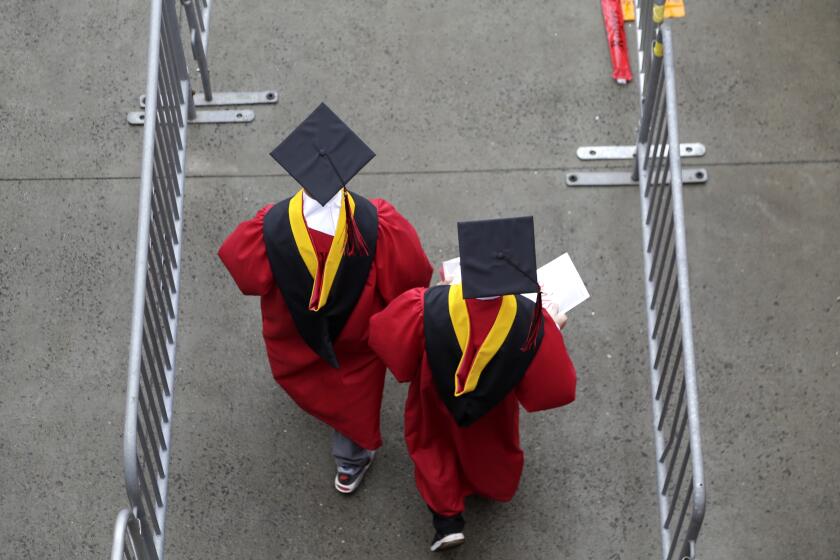Opinion: Today’s LAPD ‘eyes in the sky’ are helicopters; will tomorrow’s be drones?
In the 2002 movie “Minority Report,” the police know ahead of time who will commit a crime, so they arrest criminals before they act. Aside from prompting interesting philosophical debates over free will and predestination, it’s a natural question for law enforcement: Rather than apprehending suspects after they do something wrong, can we stop the crime from happening in the first place?
Maybe so.
“Now the LAPD is pioneering the use of helicopters to stop crimes before they start,” report Kate Mather and Richard Winton of The Times. “Tapping into the data-driven policing trend, the department uses heat maps, technology and years of statistics to identify crime ‘hot spots.’ Pilots then use their downtime to fly over them, on the theory that would-be criminals tend to rethink their nefarious plans when there’s an airship hovering overhead.”
“‘It’s extremely cutting edge,’ says Capt. Gary Walters, who heads the LAPD’s air support unit. ‘It’s different. It’s nothing that we’ve ever done before with this specificity.’”
As Peter Weller’s partner in the classic 1980s movie “Robocop” says, pretty neat. But also pretty dystopian.
“What some see as an innovative tool for keeping the peace, however, others call a deafening intrusion,” note Mather and Winton. Anyone who spends a significant amount of time in Los Angeles can attest to that. You might accept the presence of “ghetto birds” in urban skies, but you never really get used to it. As someone who has spent time in Los Angeles and in Afghanistan, I can verify that the sense of a war-zone occupation feels about the same in both places.
“[Americans] are sending a message that they don’t want our police militarized, they don’t want that occupying army feel. And the use of helicopters fits in that frame,” says Andrew Guthrie Ferguson, an associate professor of law at the University of the District of Columbia.
When I first heard about the LAPD preemptive helicoptering program, the first thing that popped up in my head was “drones.” After all, they are a lot cheaper than helicopters to purchase, maintain and operate. Given the constant pressure on the department to cut costs, you know it’s only a matter of time before they deploy hundreds or maybe thousands of the things to watch over us.
I wasn’t the only one.
Los Angeles police bowed to pressure from privacy advocates last year when they agreed not to use two drones they received as gifts from the Seattle Police Department. For now.
“If this [helicopter] experience is successful,” says Peter Bibring, a senior staff attorney for the ACLU’s Southern California chapter, “this could be a preview of how one day the LAPD could use drones for this purpose.”
The French philosopher Grégoire Chamayou has written a book, “A Theory of the Drone,” that convincingly argues that the “dronization” of American government is inevitable. It stands to reason that that includes domestic community policing. It’s essential reading for anyone who cares about the rights of the ordinary citizen.
Chamayou is careful to point out that the slippery slope isn’t necessarily inevitable -- the skies over L.A. and other American cities don’t have to fill up with police drones following our every move. That said, who is going to stop it from happening? Nothing short of a mass protest movement can slow the profit-driven militarization of American society. We haven’t seen one of those for nearly half a century.
Follow the Opinion section on Twitter @latimesopinion and Facebook
More to Read
A cure for the common opinion
Get thought-provoking perspectives with our weekly newsletter.
You may occasionally receive promotional content from the Los Angeles Times.










